Ephemeral
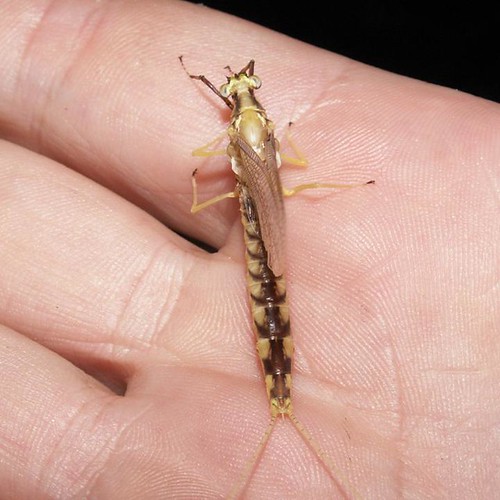
By the time Mary and I had reached the "post office mall" a pumpkin-orange Moon was glowing between two distant trees. Alas, without my tripod all I could get was an over-exposed blur.
But last night was Mayfly Night....
We had enjoyed a late dinner at Sal's, a local Italian restaurant, and were the last customers to leave. By that time the outdoor plants had been moved inside, giving the entryway a tropical look. As we talked with the proprietor a mayfly flew in and perched next to the Specials board.
Maneuvering around large pots and broad leaves, I offered to escort it back outside.
According to insect photographer Cirrus Digital Imaging, adult mayflies "survive only a few hours or at most a few days. They eat nothing, nor do they crawl or walk."
The adults are called imagos -- but they spend a brief period (up to a couple of days) before their short-lived maturity as subimagos -- which I think this one is.
We stepped outside. I'm pretty sure this is a Hexagenia limbata (Family Ephemeridae), given its size. It was on my right hand, which gave me good practice in flipping up the flash and working the controls with my non-dominant hand.
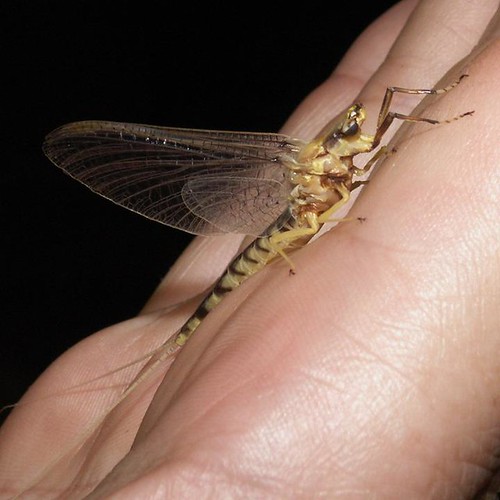
I held something that had spent perhaps a year as a naiad (larva), living its younger days burrowed up to 60 feet deep in the muddy bottom of a lake or stream. Now it was getting ready to mate and die.
Continues Cirrus, "Swarms, consisting of hundreds or thousands, emerge from the water after synchronously appearing along and inland of the shoreline....Mating normally occurs the same day adulthood is achieved. Females release as many as 8,000 fertile, oval eggs over the water, often scattering them or, in some species, in mass in a suitable place. After eggs are laid, females fall to the water and float, often drifting onto beaches in nuisance piles or windrows."
Says Bugguide.Net, "Adults emerge in evening, disperse widely, coming to lights--often far from bodies of water."
Around us, other mayflies were flinging themselves against the strip mall's lights overhead. Mary offered to take the mayfly, so that I could use both hands to maneuver the camera.
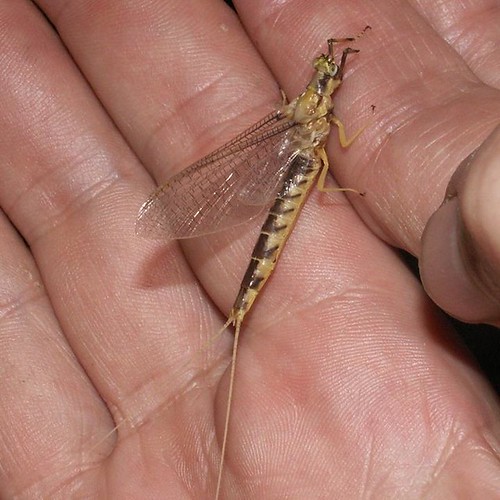
At first her finger was a bit above mine. She lowered her hand gently into position, giving the mayfly less need to climb.
I'm guessing this is a female, given the absence of penes. What I at first thought might be an ovipositor is actually a vestigial tail filament between the two longer ones. Males have penes below the tail filaments.
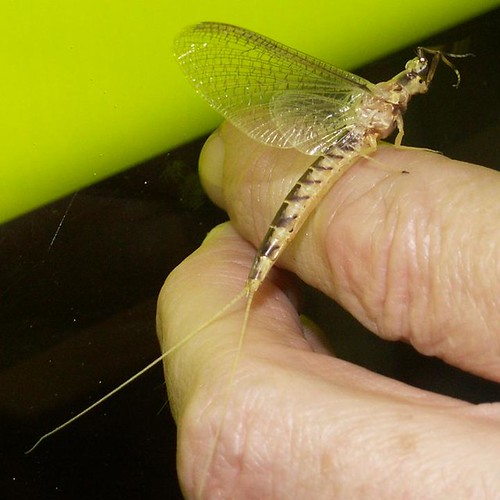
Mary brought it over to the H&R Block office's yellow-green light. A too-quick turn and it flitted away, landing on a nearby window.
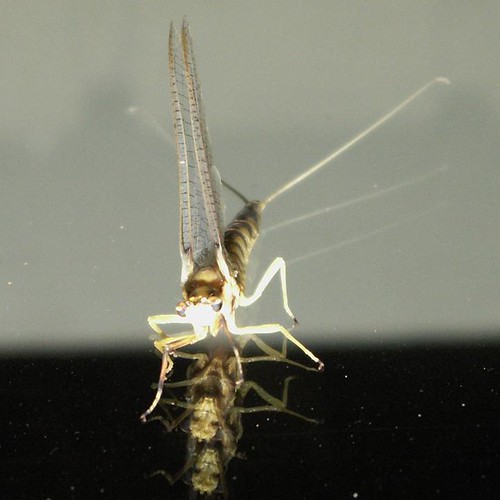
As I looked into its eyes I realized this beautiful, ethereal creature would be dead in a few days. One brief tangle of colliding swarms -- a cloud of smaller males intersecting one of the larger females. Thousands of eggs per female -- millions overall? tens of millions? -- sinking to the bottom of a water body. So many hatchlings burrowing as deeply as they can.
And then, they wait. One year in the south, up to two years in the north. Around the Great Lakes their parents have died together in such great numbers that the corpses must be plowed away in order to clear the roads.
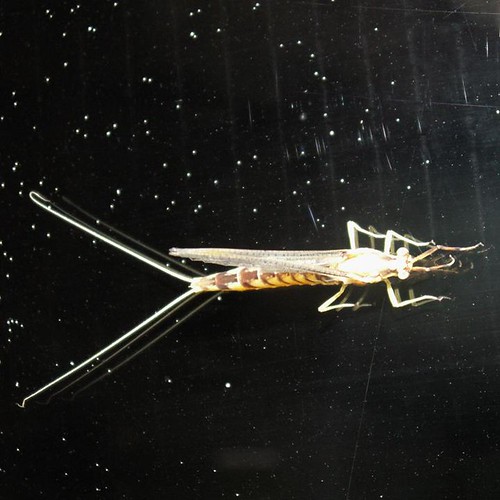
"Our" mayfly was still perched on the window when we left. She might well have been a massive ship cruising through a starfield; but that is only a trick of the lens. Or of nature.











5 Comments:
Wow - lovely pictures and photoessay on mayflies. Thanks.
Our local wildlife biologist accuses us of harboring a bat colony (in our house!) that has decimated the local lake population of mayflies. I think he's kidding.
It's hard to wrap your mind around the idea of an adult (imago!) that has such a short lifespan compared to the child - mayflies, cicadas, and so forth. It must be nice to be an insect kid, until you grow up.
I love the photo with the double reflection. There's real pathos in that image of a sub-imago.
It looks like a pin you could wear. I never knew what a Mayfly looked like. Right month for one.
oh yes, beautiful - like jewelry!
The Starship,Mayfly,is responsible for bringing over more aliens? It is to be hoped amnesty will be extended. To think they clog our roads and cause tax-payer money to be spent!
Beautiful photos!
Post a Comment
<< Home